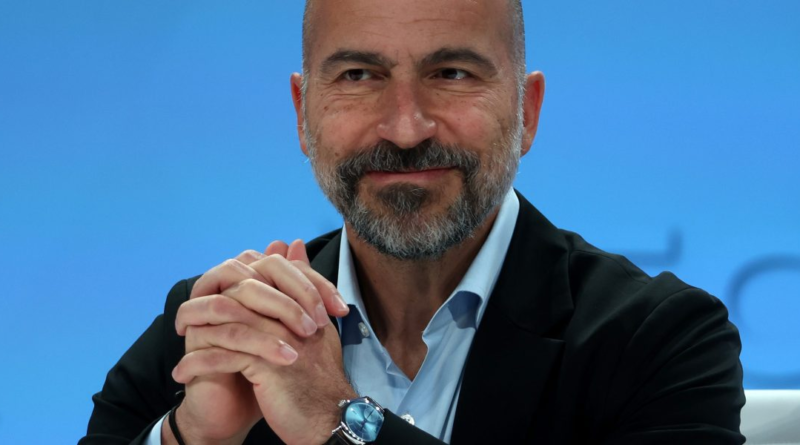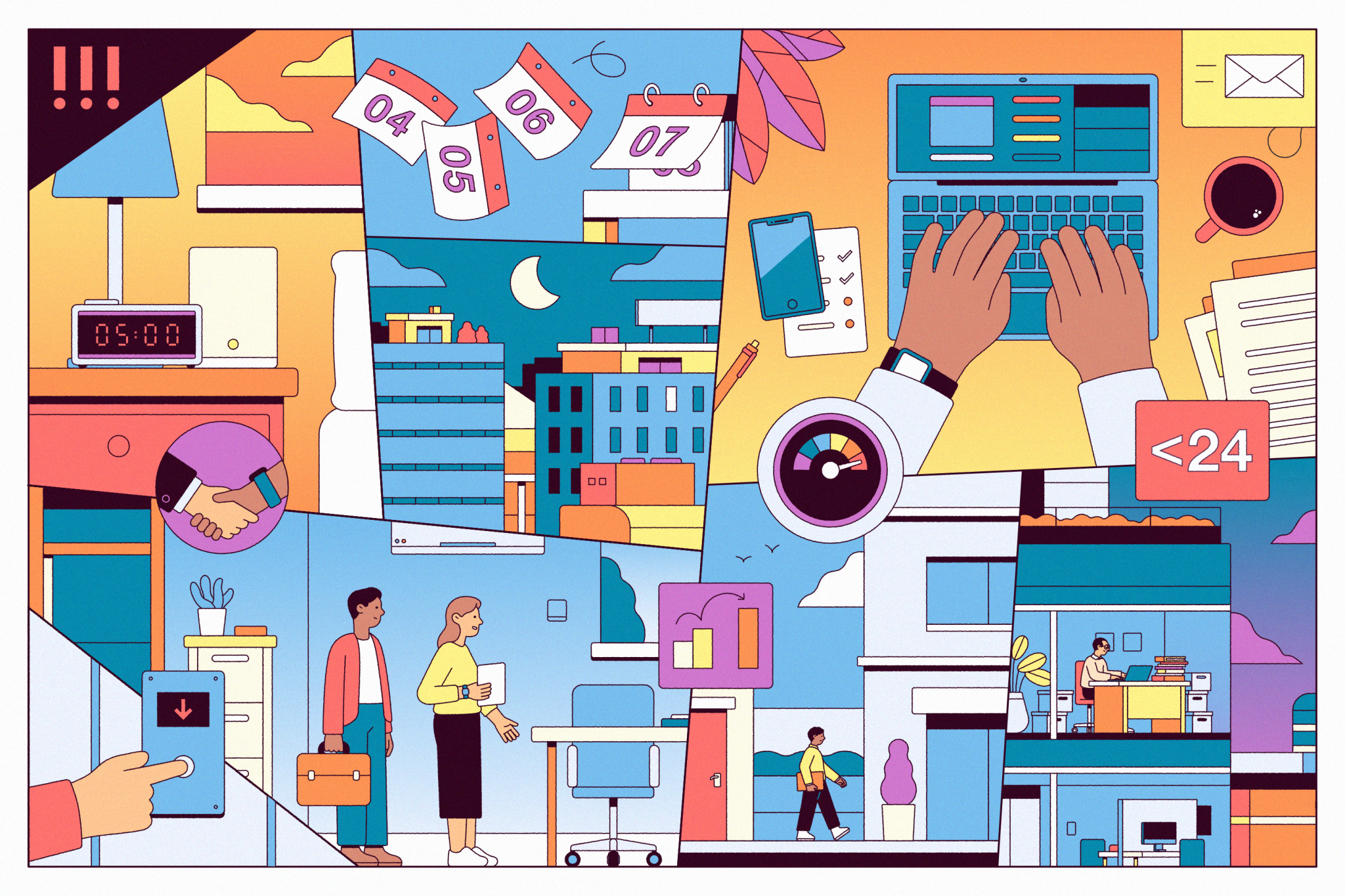Uber's first profitable year brings another milestone: a $7 billion share buyback plan, its first ever
Uber Technologies Inc. will buy back as much as $7 billion in shares to return capital to shareholders after reporting its first full year of operating profit and consistent positive free cash flow in 2023.
The repurchase plan “is a vote of confidence in the company’s strong financial momentum,” Chief Financial Officer Prashanth Mahendra-Rajah said in a statement on Wednesday. “We will be thoughtful as it relates to the pace of our buyback, beginning with actions that partially offset stock-based compensation, and working toward a consistent reduction in share count.”
The stock jumped as much as 11% in New York, its biggest gain since last May. It had more than doubled over the past 12 months through the close of trading Tuesday.
Uber is the latest of a handful of tech companies announcing plans to boost returns to shareholders. Earlier this month Meta Platforms Inc. announced plans to buy back an additional $50 billion in shares and issue its first-ever quarterly dividend, while Airbnb Inc. expanded its buyback program by $6 billion on Tuesday.
The capital allocation plan marks another milestone of financial health for Uber after it racked up $30 billion in accumulated deficits over years of freewheeling spending as it sought to gain market share and push into new markets. But last week, Chief Executive Officer Dara Khosrowshahi said 2023 was an “inflection point” and signaled he would return capital to shareholders. The San Francisco-based ride sharing and delivery company reported its first full year of profit as a public company and projected continued growth in 2024.
In December, Uber was added into the benchmark S&P 500 Index and it has said it’s on a “very clear path” to an investment-grade credit rating.
“If you are a cash machine and the Street is still relatively cautious in the way it values your business, one of the best uses of cash you can do is to buy back your own stock,” New Street Research analyst Pierre Ferragu said on Bloomberg Television’s Surveillance. “That’s music to our ears.”
Ferragu, who has a buy rating on the stock, said “Uber is really playing out the way we were expecting” by emerging as the strongest player in the ride-hailing market.
Uber, which was holding a meeting with investors Wednesday, said it expects gross bookings growth over the next three years in the mid-to-high teens. Growth in adjusted earnings before interest, taxes, depreciation and amortization is projected to increase in the high 30% to 40% range.
In reporting its latest financial results last week, Uber showed a fourth consecutive quarter of positive free cash flow at $768 million. And over the next three years, it expects free cash flow as a percentage of adjusted Ebitda to grow more than 90% on an annual basis, according to presentation slides from its investor day event.
Much of Uber’s transformation has been brought about under Khosrowshahi. The former Expedia Group Inc. chief executive took the reins in 2017 from co-founder Travis Kalanick, whose brash leadership style earned Uber an early reputation of exorbitant spending, public relations disasters, a toxic workplace culture and antagonistic relationships with local regulators.
Khosrowshahi, 54, has pushed Uber into new businesses beyond its core ride-sharing, into restaurant and grocery delivery and advertising, which has helped improve profit margins.
The onslaught of the pandemic forced Uber to evaluate its business as people hunkered down at home and stopped taking shared rides. The company transitioned into a more asset-light business model, offloading its loss-making bikes and scooters business and winding down its capital-intensive autonomous vehicle division. Investing into its Uber Eats food delivery business allowed it to capitalize on pandemic-induced lockdowns even as demand for shared rides stalled.
Uber has been able to enjoy the economies of scale in many of its markets in the US and overseas, and it is still planning to grow further in other areas like delivery, lower-cost rideshares like two-wheelers and corporate travel products.




